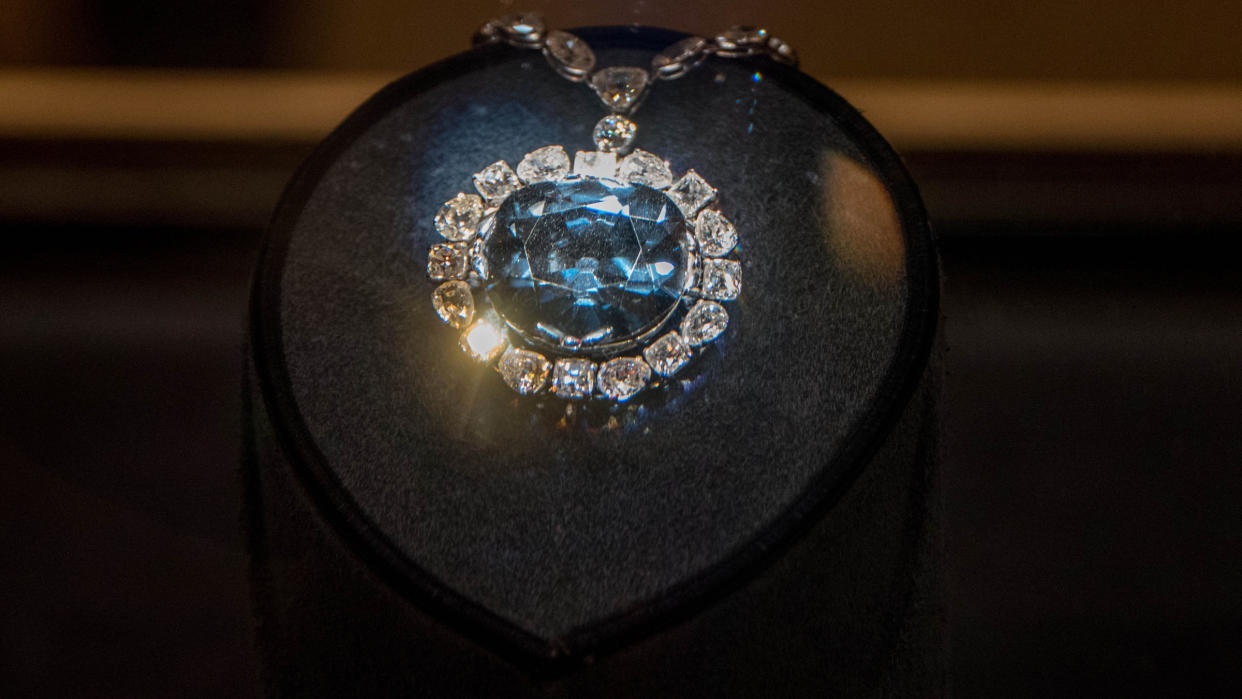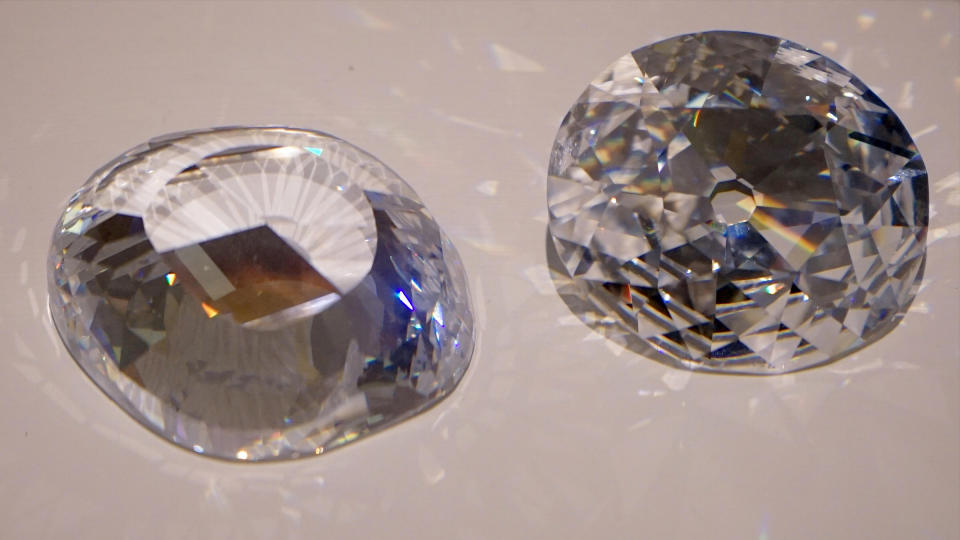Scientists may have pinpointed the true origin of the Hope Diamond and other pristine gemstones

Researchers may have found the true origin of the Hope Diamond, the Koh-i-noor and other famous, flawless gemstones.
These diamonds, known collectively as the Golconda diamonds, are special because they have few inclusions and are very low in nitrogen, making them very clear and free of sparkle-disrupting flaws. They are also large. The Koh-i-noor, now one of the British Crown Jewels, weighs a whopping 105.60 carats. The Hope Diamond, held at the Smithsonian's National Museum of Natural History in Washington, D.C., weighs 45.52 carats.
These diamonds were discovered in southern India between the 1600s and the 1800s and carry stories of colonialism and controversy. Most are now held outside India, and there are calls to repatriate many of them because of their cultural and religious significance. These diamonds also tend to have a larger-than-life aura. The Hope Diamond, for example, is said to be cursed. So is the Regent Diamond, now in the collection at the Louvre. (That diamond is also said to have been smuggled out of a mine by an enslaved miner who stashed it in an open leg wound.)
The Golconda diamonds were found in so-called placer mines, which are shallow pits dug into riverside sediments; the diamonds were carried with these sediments to the riverbanks. But diamonds come to Earth's surface inside large volcanic eruptions called kimberlites, and no one knew where the kimberlite rocks that bore these diamonds might be found.
Now, new research published March 15 in the Journal of Earth System Science suggests that the diamonds may have come from the Wajrakarur kimberlite field in modern-day Andhra Pradesh, up to 186 miles (300 kilometers) from where they were mined.

The findings do leave some uncertainty, however, said Yaakov Weiss, a geochemist who studies diamonds at The Hebrew University of Jerusalem. The researchers studied the geochemistry of common diamonds from the lithosphere — the rigid crust and upper mantle — and determined that the Wajrakarur field could host diamonds. The Golconda diamonds, however, form deeper in the mantle, perhaps as deep as the transition zone near Earth's core.
"The analysis is related mainly to lithospheric diamonds, and we believe the larger diamonds are coming from deeper in the Earth," Weiss, who was not involved in the research but reviewed the paper for publication, told Live Science. "So it still has some uncertainty."
To attempt to trace the source of the Golconda diamonds, Hero Kalra, Ashish Dongre and Swapnil Vyas — all geoscientists at Savitribai Phule Pune University in India — studied the chemical signatures of nearby kimberlites and lamproites. These are rocks that came from the base of the crust and upper mantle, where most diamonds form.
They found that kimberlite rocks from the Wajrakarur field likely rose from the depths where diamonds are forged and host minerals that tend to co-occur with diamonds. They then conducted surveys using remote-sensing data, such as satellite imagery and vegetation and moisture measurements.
These surveys revealed a long-dry ancient river channel that could have swept diamonds from Wajrakarur to the Krishna River and its tributaries, where the stones were eventually found.
Linking a kimberlite field where standard lithospheric diamonds are found with the deeper Golconda diamonds isn't a slam dunk, though, Weiss warned. These deeper diamonds have different chemistries and could, theoretically, still have come from elsewhere.
related stories
—Listen to diamonds erupt from the deep Earth in a stunning animation
—Earth's biggest cache of pink diamonds formed in the breakup of the 1st supercontinent 'Nuna'
—Giant blobs in Earth’s mantle may be driving a 'diamond factory' near our planet's core
No one knows exactly how these deep diamonds reach Earth's surface, he said. They may rise up from the deep mantle on hot fountains of magma known as mantle plumes and then get wedged in the lower crust and upper mantle with more run-of-the-mill diamonds that form in those regions. Then, when a kimberlite eruption occurs (probably as a result of a supercontinent breakup), all of the diamonds erupt to the surface at once.
However, it's very challenging to discover the origins of the Golconda diamonds directly, because these diamonds lack the tiny inclusions that hold fluids from the mantle where the diamonds first formed. This makes them beautiful and sought-after as gems, Weiss said, but it gives geochemists very little to work with. As a result, the Golconda diamonds will probably always retain a bit of mystery.

